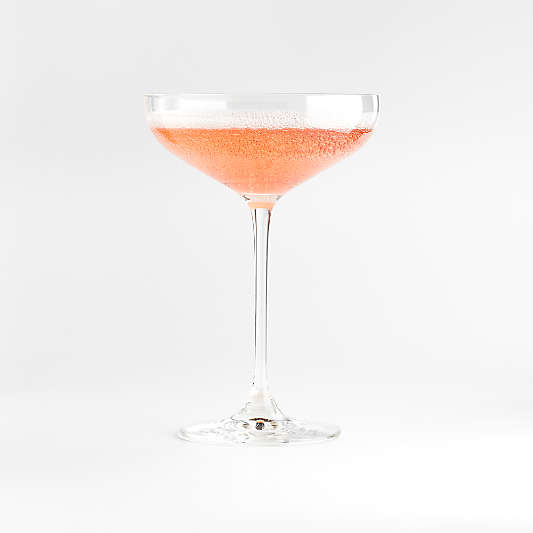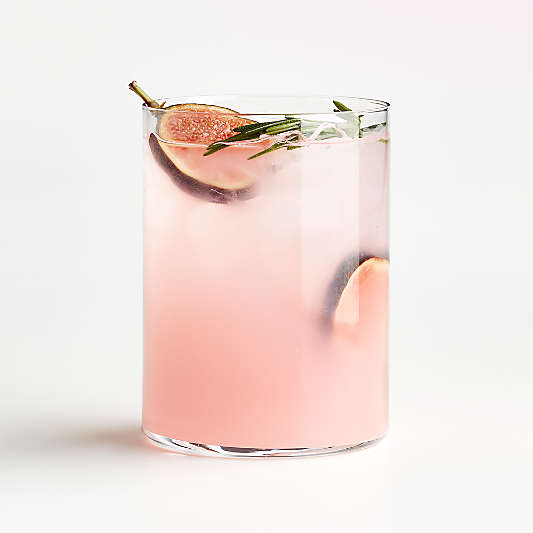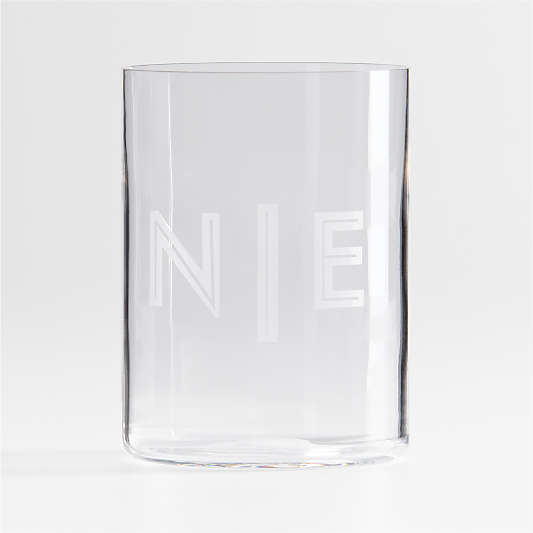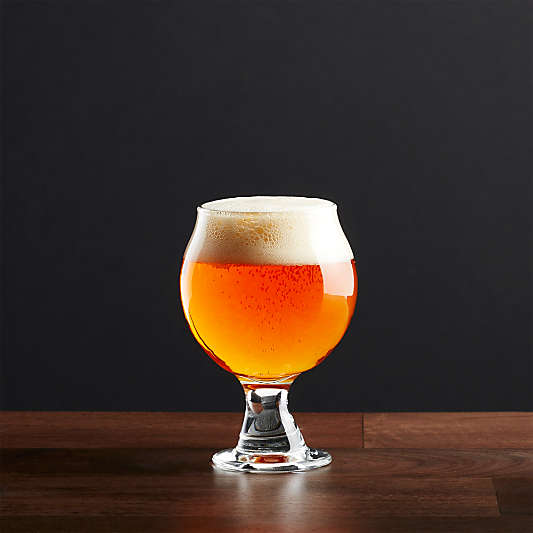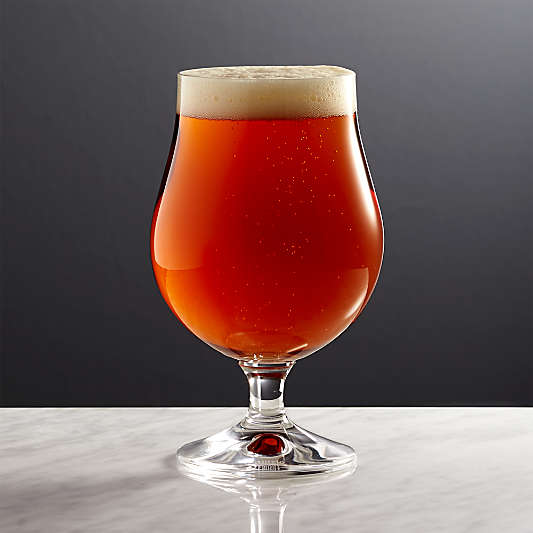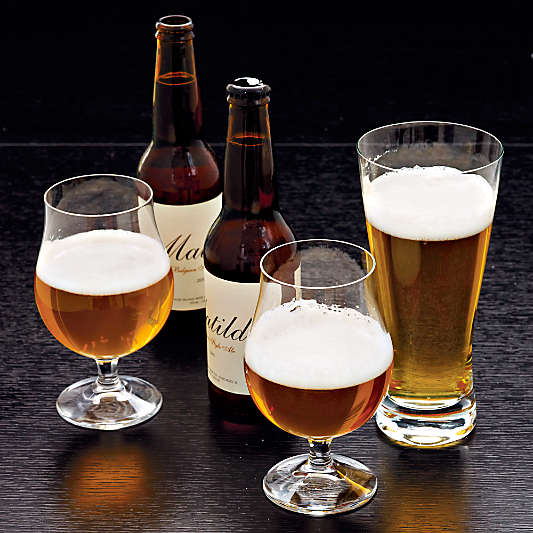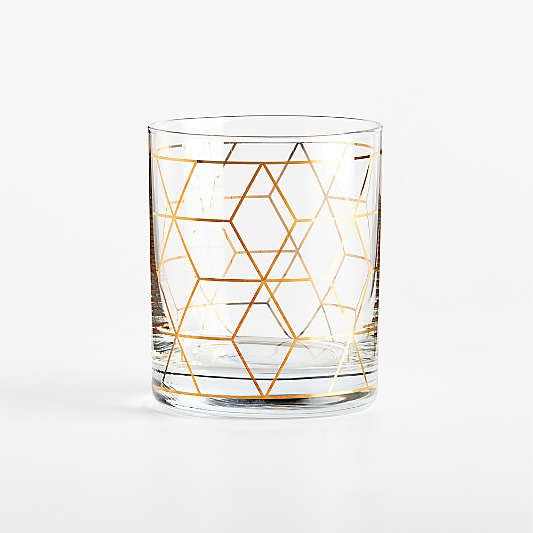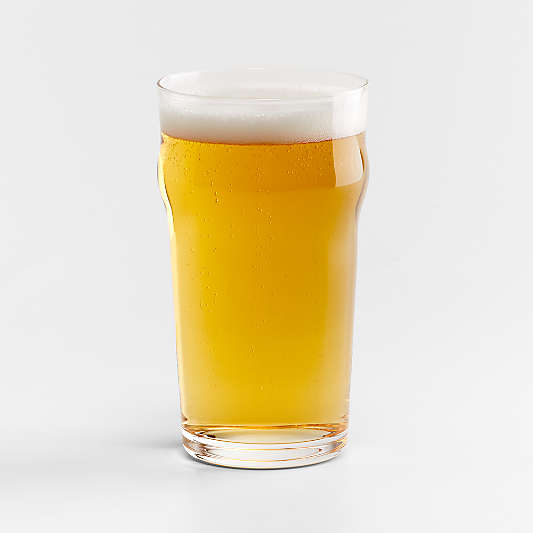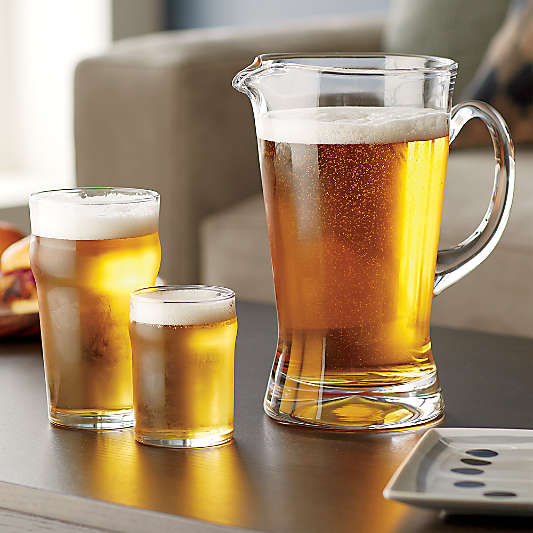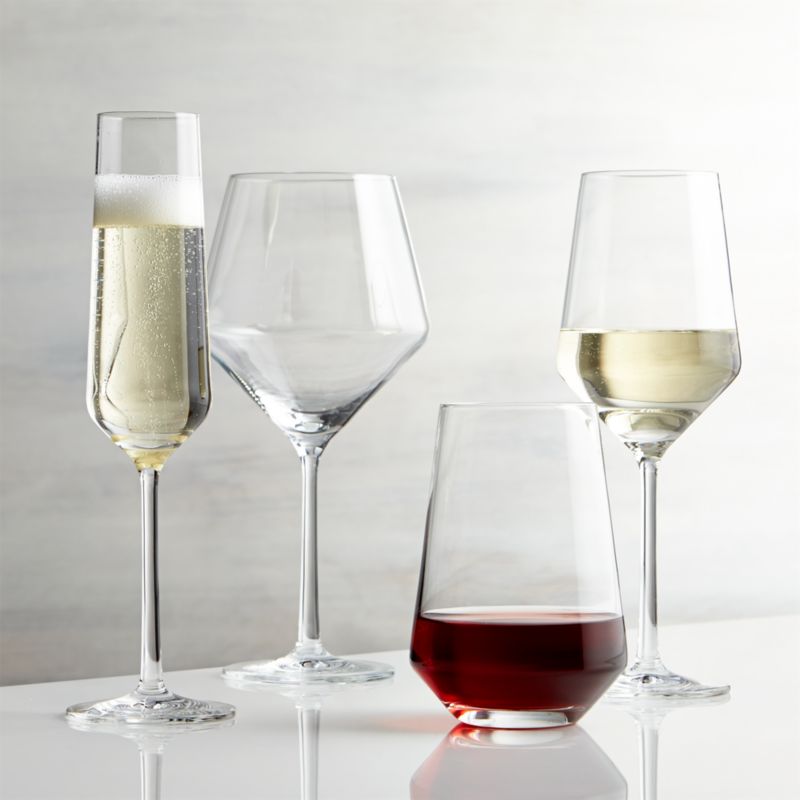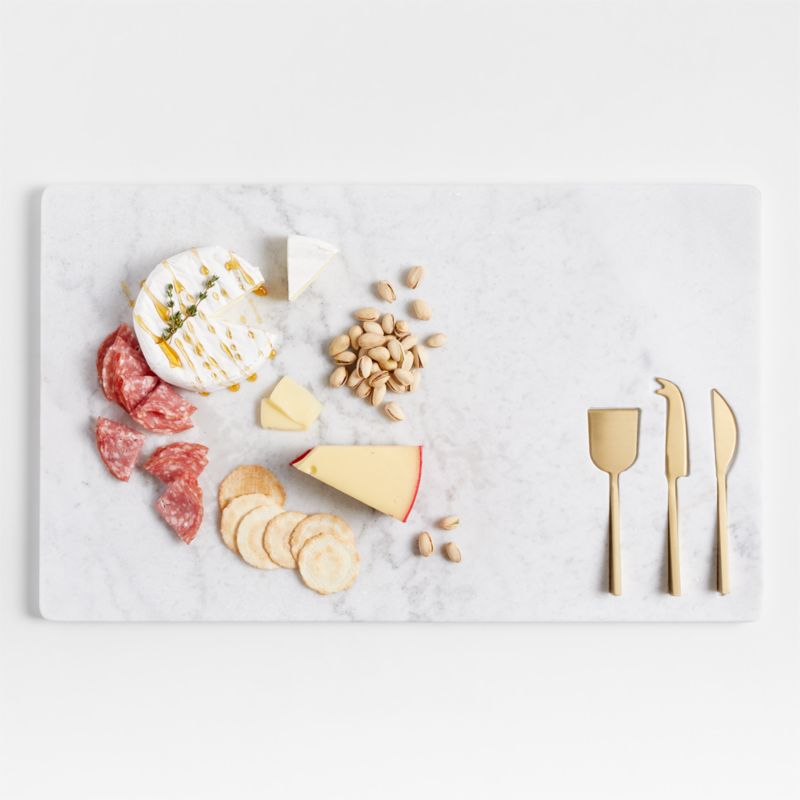- Shipping to
Something catch your eye?
Save it to Favorites
Create a Mood Board
See it all together
 View Favorites
View FavoritesAre you missing items in your cart?
to see items you may have added using another computer or device.
View Cart22 Types of Cocktail Glasss: An In-Depth Guide
types of cocktail glasses:
an in-depth guide
Mastering the art of crafting cocktails is more than shaking and stirring; it involves finesse, creativity and most
of all, the proper drinkware. Historically used out of practicality—think enhancing aromatics and minimizing
heat transfer—today's different types of cocktail glasses are as varied as the beverages they serve. Whether
keeping it simple by stocking up on wine glasses or putting your mixology skills on display with layered
libations, this in-depth guide helps narrow down the best barware for you.
SHOP ALL COCKTAIL GLASSES

but first: the basics
Why invest in different types of cocktail glasses?
The reason is simple: to enhance the drinking experience. Each type of cocktail glass is designed to bring out the complexities in
aroma, temperature, color and flavor for the beverage in question. Additionally, many connoisseurs consider presentation to be
important, as the effect of layered and blended drinks tends to get lost when served in the wrong type of bar glasses. And
sometimes using a specific kind of drinkware is just a more sensible approach—think libations that are served in the same vessel
that they’re prepared in.
Cocktail glass materials
When stocking up the home bar, are there certain materials you should be on the lookout for? It all depends on what
you’re serving. Glass is the most popular, while metals such as tin and copper are commonly used to insulate chilled
drinks—Moscow Mules and Mint Juleps included. Some mixologists prefer acrylic drinkware for a durable and
affordable option, especially if libations are being served in a casual or outdoor environment.
Cocktail glass styles
In addition to drinking, today’s cocktail glasses enhance the ambience and start conversation. No matter your preferred aesthetic,
it’s easy to find a cocktail glass style that blends in with your event. For instance, classic stemware is a seamless fit for formal
occasions, while barware in bright colors and eye-catching themes is well-suited for a laid-back happy hour. Either way, having an
array of mixed drink glasses on hand allows for more versatility when hosting friends and family.

cocktail glasses
A type of drinking glass used to serve mixed drinks,
cocktail glasses come in all shapes and sizes, making
this barware as versatile as it is functional.
highball glass
Tall and narrow, highball glasses are compatible with all sorts of libations, namely high cocktails such as Seven and Seven, Scotch and soda, and rum and Coke. Bartenders often build the drinks served in highball glasses directly inside the glass, with the shaken ingredients being poured over ice. Usually holding between 8-12 oz., this type of vessel is taller than an old-fashioned glass and shorter
than a Collins glass.
lowball glass
Also known as an old-fashioned glass, lowball glasses are a shorter version of the highball glass and are often used for serving spirits such as whiskey. With a wide and sturdy base, lowball glasses are ideal for muddling non-liquid ingredients—think mint and other herbs—with the main liquid ingredients of the drink. They are most commonly found in two sizes: single (6-10 oz.) and double (12-16 oz.).
collins glass
Also known as a cooler glass, the Collins glass looks very similar to the highball glass—the only differences being that this type of drinkware is taller and narrower. Often used to serve mixed drinks, especially Tom Collins and John Collins cocktails, Collins glasses make a suitable alternative when serving high cocktails that are otherwise served in a highball glass. Collins glasses are cylindrical in shape and hold 10-14 oz.
martini glass
A staple since the 1925 Paris Exhibition, when it was introduced as a modern alternative to the coupe glass, martini glasses were originally used for the consumption of champagne. Today’s version features longer stems to minimize heat transfer and a wider brim that enhances the aroma of the liquor. In addition, steeply sloped sides prevent the separation of ingredients and also help prop up garnishes on toothpicks and skewers. Martini glasses are commonly found in two sizes: standard (3-10 oz.) and oversized (6-12oz.).
rocks glass
Short, broad and sturdy, rocks glasses are used to serve spirits over ice, as well as distilled spirits and sweet drinks best enjoyed in small quantities. Oftentimes, the drinks served from rocks glasses are built directly inside—making it easy to layer the different flavors with ice and liquor. Rocks glasses come in two sizes: single (6-8 oz.) and double (10-14 oz.). Pro tip: experts believe that finishing off each concoction with a gentle stir is the best way to enjoy drinks served in a rocks glass.
specialty cocktail glasses
Not too different from the types of bar glasses mentioned
above, these specialty glasses put a fun spin on timeless
favorites, as well as your own crafty creations.
punch cup
Smaller than cocktail glasses, punch cups are used for portions of stronger drinks. Popular with spiked beverages that are served in big batches, such as eggnog and fruity punches, drinks enjoyed from punch glasses are first mixed in a bowl, then poured into the individual cups. Punch glasses may or may not have a handle and are most commonly made of glass, ceramic or silver.
margarita glass
Usually associated with blended fruit concoctions, the margarita glass comes in many different styles and designs. The most popular—a welled bowl with multiple tiers—is narrow near the stem, and broad at the rim and typically garnished with salt. An added benefit: margarita glasses are also used to serve finger foods and hors d’oeuvres. Think shrimp cocktails, fruit assortments and a variety of chip and vegetable dips. Pro tip: the type of liquor glass margaritas are served in varies depending on the occasion. For instance, more formal dinners feature margaritas in a standard cocktail glass, while informal gatherings feature them in an old-fashioned glass.
copper mug
Long associated with Moscow mules, copper mugs are known for their ability to instantly turn (and remain) cold—insulating the drink being served. Copper mugs typically feature a handle that minimizes heat transfer, whether enjoying an adult beverage or something non-alcoholic, such as iced tea, water and other chilled beverages. Pro tip: the metal construction of the copper mug is believed by some to enhance the taste of the beverage being served.
julep cup
Much like copper mugs, Julep cups are known for their ability to quickly insulate cold beverages—namely Mint Juleps. Made popular by the Kentucky Derby, Julep cups are usually made of silver or pewter and are sought after as a souvenir. Pro tip: drinks served in Julep cups are best enjoyed with crushed or shaved ice, unlike copper mugs where ice cubes are preferred.
grappa glass
Aptly named after the high-alcohol Italian beverage that’s created from the distilled remnants of winemaking, the Grappa glass is designed specifically for this drink. Sensitive to temperature, Grappa glasses feature a long footed stem that prevents heat transfer and holds up a slender bowl with a flared rim. They typically hold 2-4 oz. Pro tip: due to the alcoholic volume of Grappa, it’s recommended that the glass only be filled to about one-third of its capacity.


whiskey glasses
Like lowball glasses, whiskey glasses are the ideal
way to enjoy spirits, as well as neat pours and
other favorites best enjoyed straight.
glencairn whiskey glass
Having only been around since 2011, the Glencairn whiskey glass has already made a name for itself as the “official” whiskey glass by many experts. Based on the traditional nosing glasses used in Scotland’s whiskey laps, the Glencairn glass features a tulip-shaped bowl that sits on a sturdy base—helping to deliver the aroma of the beverage directly to the drinker’s nose. Since its inception, this glass has been available in three variations: the 24% lead crystal version, the lead-free crystal version and the soda-lime version, which is the most common. Glencairn glasses typically hold 6 oz.
wine glasses
A staple at many dinner parties, wine glasses probably
aren’t the first thing that comes to mind when thinking of
mixed drinks. Crafted with the same precision and
intricacy that goes into making the vintage itself, this
type of stemware fits right in with your creative
concoctions, as well as classic sangria and spritzers.
red wine glasses
Since red wine has a thicker consistency and bold flavor, the red wine glass it’s served in typically features a large round bowl that helps increase the rate of oxidation—smoothing out the complexities in taste and aroma. Taller than white wine glasses, these tend to taper to a narrower rim that helps direct the smell and taste of the vino directly to the drinker’s nose—improving the drinking experience. As it pertains specifically to cocktails, red wine glasses are the ideal match for sangria—think ones made with Merlot, Cabernet Sauvignon and Pinot Noir.
white wine glasses
Due to the lighter flavor profile and aromas of many white wines, the stemware it’s served in is smaller and shorter than it’s red counterparts. White wine glasses have less surface area between the drink and top of the rim, which results in less oxidation—increasing the nuances of the crisp flavors. When making refreshing wine-based cocktails such as spritzers, consider keeping vintages with strong aromatics and fruity flavor well within reach. Some examples are Sauvignon Blanc and Riesling.


champagne glasses
Narrow with a tall bowl and inward-tapered rim, the design
of most champagne glasses helps maintain the drink’s crisp
carbonation. Similar to wine glasses, this type of barware
features a stem that helps prevent heat transfer from your
hand. A small notch is also present at the bottom of the
bowl to help promote the constant rise of bubbles.
champagne flutes
Featuring a clean design with classic appeal, champagne flutes are a favorite addition to your next gathering. Tall, straight and slender, this type of glass features a narrow bowl that sits atop a long stem. Not only does this design maintain the drink’s carbonation, it also enhances the aesthetic of the beverage by allowing the bubbles to travel further on their ascent to the top of the glass. Pro tip: when pouring champagne, remember to hold the glass at a 45-degree angle—minimizing foam. To get the most out of the aroma, the glass should only be filled to half its capacity as well.
champagne tulip glass
Resembling a hybrid between a champagne flute, coupe glass and white wine glass, tulip glasses are designed with aromatics in mind. Featuring a wider bowl than a champagne flute, tulips let the aromas of your bubbly intermingle while sipping. The glass also features a slight curve that allows for concentrated aeration, keeping the smells in place and encouraging the bubbles to rise properly. Not sure what cocktails to serve in a tulip glass? Consider classic champagne cocktails and juleps, as well as Black Velvets, Cardinales and Twinkles.
champagne saucer
Also known as a coupe glass, the champagne saucer is used less often than the champagne flute and tulip glass. Known for its fast aeration and quick aroma development, saucer glasses were most popular in the early 1900s, when its wide and shallow bowl made it easier to sip the syrup-based champagnes of the day. Why has it fallen out of favor with today’s champagne purists? To put it simply, the shape of the bowl is ineffective at maintaining the flow of bubbles, which means the aroma disappears as quickly as it develops. Modern coupe glasses are largely used to serve craft cocktails, including the Martinez, Sidecar and Aviation.
Nick and Nora glass
Named after Nick and Nora Charles, the main characters in the 1934 comedy-mystery film, The Thin Man, this type of cocktail glass is a specialty alternative to the champagne saucer. It features a bell-shaped bowl that sits on top of a long stem—slightly resembling the design of a white wine glass. Nick and Nora glasses are most commonly used to serve drinks that are shaken or stirred. They are also used to serve any beverage that’s otherwise served in a martini glass. Pro tip: some purists insist that beverages served from the Nick and Nora glass never be on the rocks. They recommend chilling the glass in the refrigerator or freezer before making the first pour instead.
liqueur glasses
These glasses are typically small in size and set atop
a stem. They are best used for serving small pours of
cordials or liqueur.
cordial glass
Resembling a shot glass, cordial glasses are designed specifically for the consumption of sweet liquors. Featuring a short stem and constructed of a thin and delicate glass, this type of drinkware is also suitable for use when serving layered libations that are meant to be enjoyed one component at a time. Cordial glasses generally hold 1.5 to 2 oz.
Irish coffee mug
Irish coffee mugs are the ideal choice when consuming spiked beverages served hot. Made of glass and situated on top of a thick stem, Irish coffee glasses feature a sturdy base that holds up a narrow bowl. The rim on top flares outwards—ensuring toppings that include foam, whipped cream and other confections stay in place. In addition, most are transparent and put the layers of the drink on display. Some also have a handle. In addition to Irish coffee, they're also ideal for hot toddies and boozy hot chocolate.


neat liquor glasses
Designed to enhance the experience of bourbon, brandy
and other drinks served straight, neat liquor glasses are
a staple in your home’s cigar room.
shot glass
Short, small and narrow, shot glasses are used for quick consumption of straight liquor. Most shots are enjoyed right from the glass, while a handful of others are dropped into a cocktail. For more creative concoctions, a taller shot glass is used to put artistic libations with layers of color, flavor and other ingredients on display. Shot glasses are most commonly found in two sizes: single (1.5 oz.) and double (2-3 oz.).
snifter
Used to enjoy bourbon, brandy and whiskey, snifters feature a short stem that holds up a round bowl. Not only does this design make it easy for drinkers to grasp the cup in the palm of their hand, it also encourages heat transfer as these drinks are best served at room temperature. Most snifters hold 6-8 oz. Pro tip: the round bowl is meant to encourage swirling and sniffing while consuming the drink inside. As with some of the other larger cocktail glasses, snifters are only meant to be filled to a small bit of their capacity.
cognac glass
Cognac glasses are a type of snifter that are also known as balloon glasses. Very similar in appearance to snifters, balloon glasses also feature a short stem with a round bowl that is meant to be grasped in the palm of the hand. A popular choice for those who want to fully enjoy the flavors and aromas of cognac and brandy, this type of drinkware is consistently noted as a favorite among experts.
share how you happy hour
Now that you’re familiar with the different types of cocktail glasses for drinks, it’s time to kick back and relax with a favorite
mixed drink. Already have a collection? Show us what your happy hour looks like at the hashtag #CrateStyle.
- bestsellerSale CAD 17.55 reg. CAD 21.95Black Friday SaleFree Ship Over CAD 149
- bestsellerSale CAD 11.15 reg. CAD 13.95Black Friday SaleFree Ship Over CAD 149Get It Personalized






